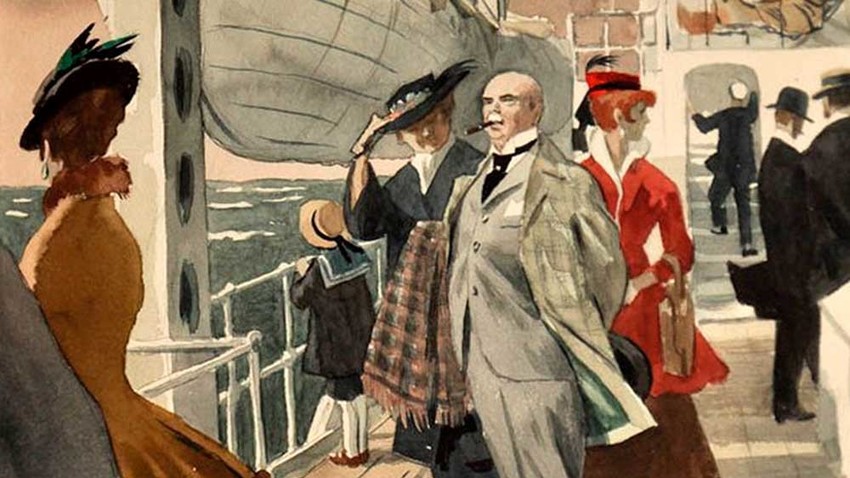
A wealthy nameless gentleman is traveling to Italy on a ship called Atlantis. When he arrives at Capri, he suddenly dies, and his body becomes a burden for everyone – including his family, which does not know what to do with it. The solution to the problem would definitely not have impressed the wealthy gentleman himself.
The critic Abram Derman, a contemporary of Bunin, wrote that: “It has been more than ten years since the end of Chekhov's creativity, and in this period, if we were to exclude everything that was published after Leo N. Tolstoy's death, there has not been an artistic work in the Russian language that is equal in power and meaning to the story The Gentleman from San Francisco.”
This erotic story follows Mitya, a student, and the girl he is in love with, Katya, who is studying to become an actress. She is maturing and laughs at his boyishness. Mitya is tormented by his passion and jealousy and leaves Moscow for the countryside in order to understand himself better. However, all does not turn out very well there, to say the least. The philosopher Fyodor Stepun, Bunin’s friend, wrote that the author “reveals the tragedy behind every human love” in this story.
Bunin, who did not accept Bolshevism and supported the Whites in the Civil War, emigrated from Russia to France in 1920. His diaries Cursed Days, which reflect this turbulent and complicated period in Russia's history, were partially published in a Russian émigré newspaper in Paris. The work was not published in the USSR until perestroika, because it was filled with hatred towards the Bolsheviks and disillusion with the revolution. “But surely many people knew that a revolution is only a bloody game of swapping places that always ends up with ordinary people, even if they do manage to sit, revel and rage on the governing throne for some time, ultimately ending up in a worse situation than before?” Bunin writes in Cursed Days.
In Bunin's opinion, it was this novel, published in Paris in 1930, that led him to receive the Nobel Prize in Literature for the “humble mastery with which he develops the traditions of classical Russian prose.”
The novel depicts the childhood and adolescence of Alexei Arseniev and his love for Lika – a love that her father is against. The girl runs away from Arseniev, but when he tries to track her down, her father does not say where she is. Just like Mitya’s Love, you should not read this book if you like your stories to end happily ever after.
The novel contains many autobiographical elements, both in terms of the places and characters, not least that just like his protagonist Bunin had an unmarried relationship with a woman called Varvara. The writer Konstantin Paustovsky called The Life of Arseniev one of the most wonderful works of world literature.
One of the most famous stories from the Dark Avenues collection is “Easter Monday”, which is about a mysterious love affair and the silent nocturnal encounters between two young rich people. On the first day of Lent, Easter Monday, the young lady tells the protagonist that their affair is over, saying that she is leaving. Two years later he finds out that she is a nun in a Moscow monastery.
Bunin himself considered Dark Avenues to be one of his best works. The stories have been adapted to the screen and stage many times, and are part of the curriculum in Russian schools. The first story from the collection was published in New York in 1938, and the rest were written in Paris during World War II.
If using any of Russia Beyond's content, partly or in full, always provide an active hyperlink to the original material.
Subscribe
to our newsletter!
Get the week's best stories straight to your inbox